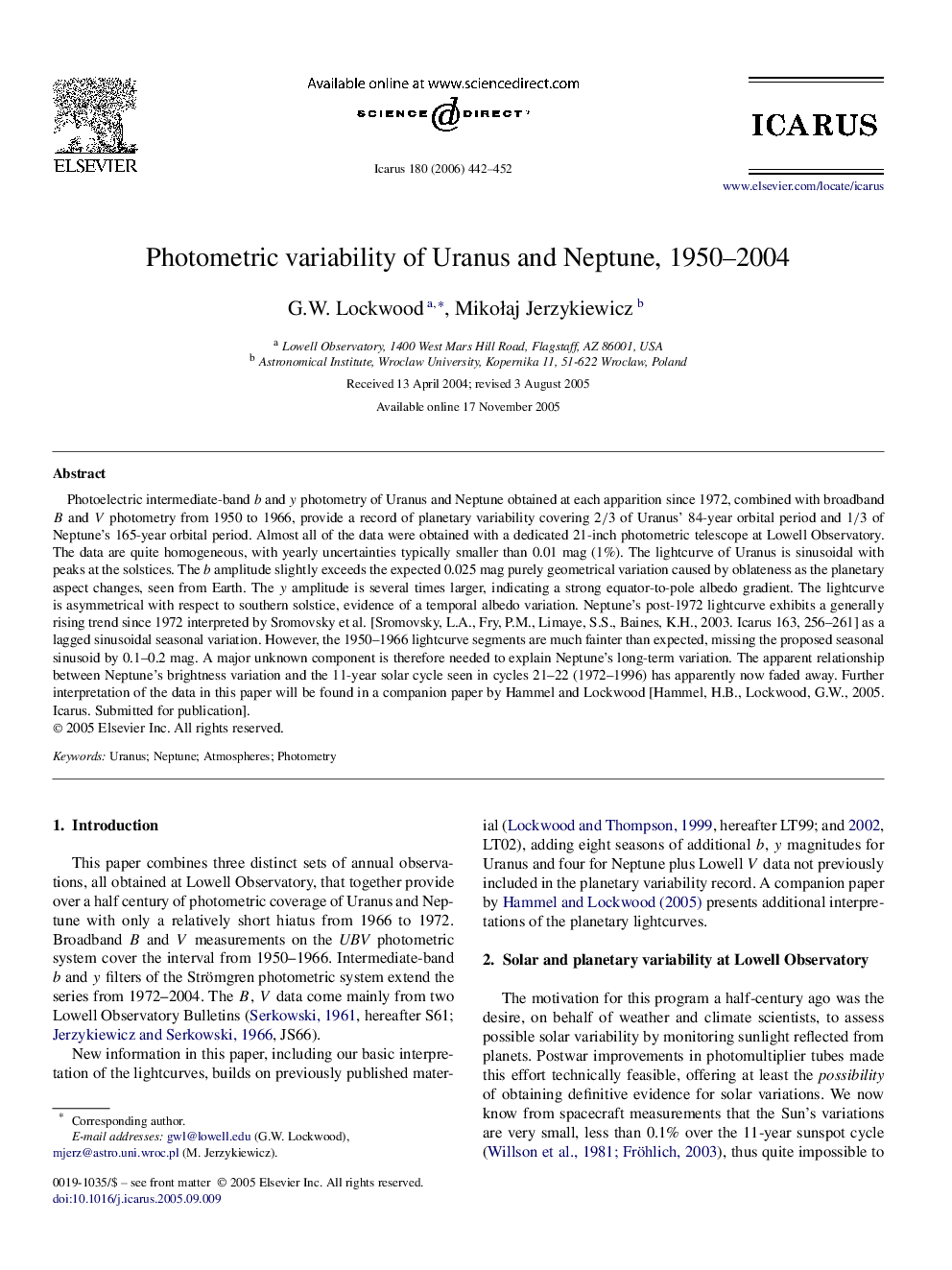| Article ID | Journal | Published Year | Pages | File Type |
|---|---|---|---|---|
| 1775952 | Icarus | 2006 | 11 Pages |
Photoelectric intermediate-band b and y photometry of Uranus and Neptune obtained at each apparition since 1972, combined with broadband B and V photometry from 1950 to 1966, provide a record of planetary variability covering 2/3 of Uranus' 84-year orbital period and 1/3 of Neptune's 165-year orbital period. Almost all of the data were obtained with a dedicated 21-inch photometric telescope at Lowell Observatory. The data are quite homogeneous, with yearly uncertainties typically smaller than 0.01 mag (1%). The lightcurve of Uranus is sinusoidal with peaks at the solstices. The b amplitude slightly exceeds the expected 0.025 mag purely geometrical variation caused by oblateness as the planetary aspect changes, seen from Earth. The y amplitude is several times larger, indicating a strong equator-to-pole albedo gradient. The lightcurve is asymmetrical with respect to southern solstice, evidence of a temporal albedo variation. Neptune's post-1972 lightcurve exhibits a generally rising trend since 1972 interpreted by Sromovsky et al. [Sromovsky, L.A., Fry, P.M., Limaye, S.S., Baines, K.H., 2003. Icarus 163, 256–261] as a lagged sinusoidal seasonal variation. However, the 1950–1966 lightcurve segments are much fainter than expected, missing the proposed seasonal sinusoid by 0.1–0.2 mag. A major unknown component is therefore needed to explain Neptune's long-term variation. The apparent relationship between Neptune's brightness variation and the 11-year solar cycle seen in cycles 21–22 (1972–1996) has apparently now faded away. Further interpretation of the data in this paper will be found in a companion paper by Hammel and Lockwood [Hammel, H.B., Lockwood, G.W., 2005. Icarus. Submitted for publication].
